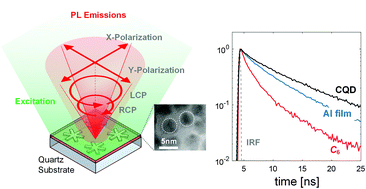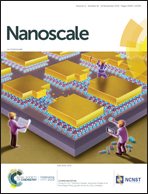Plasmon–exciton systems with high quantum yield using deterministic aluminium nanostructures with rotational symmetries†
Abstract
The abundance and corrosion-resistant properties of aluminium, coupled with its compatibility to silicon processing make aluminium an excellent plasmonic material for light–matter interaction in the ultraviolet-visible spectrum. We investigate the interplay of the excitation and emission enhancements of quantum dots coupled with ultra-small aluminium nanoantennae with varying rotational symmetries, where emission enhancements of ∼8 and ∼6 times have been directly measured for gammadion and star-shaped structures. We observed spontaneous emission modification in the Al antenna with a C6 symmetry and deduce a Purcell factor in the range of 68.01 < FP < 118.25 at plasmonic hotspots, corresponding to a modified quantum yield of >89% in the single antenna and near-unity quantum yield at the plasmonic hotspots. This finding brings us a step closer towards the realization of circularly polarized nanoemitters.



 Please wait while we load your content...
Please wait while we load your content...